Relearning Infiltrations
The Light Infantry Advantage
By LTC Aaron Childers and MAJ Michael Stewart
Article published on: August 1, 2024 in the Fall 2024 Issue of the infantry journal
Read Time: < 11 mins
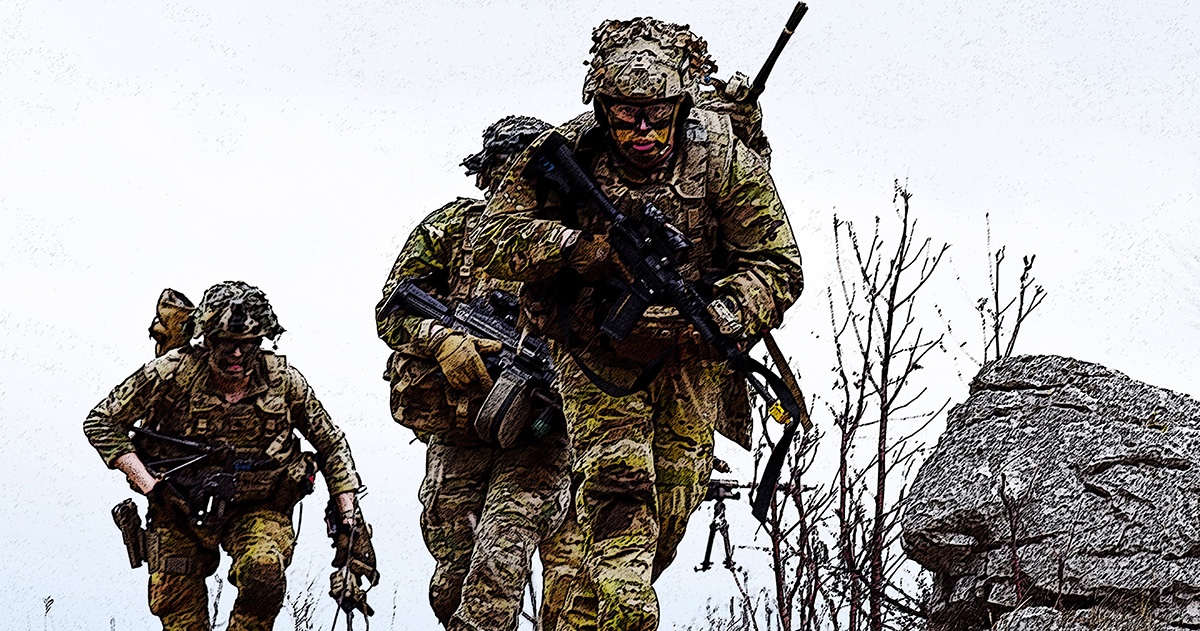
(Illustration from photo
by Paolo Bovo)
Over the last two years, much attention has been
given to the destruction of Russian tanks by
Ukrainian forces as part of the ongoing war between
the two nations. As of 19 February 2024, more than 2,742
tanks had been destroyed, and images of these destroyed
vehicles have become a hallmark of the conflict.1
Ukrainian
forces received Javelin anti-tank missiles from the U.S.
early in the conflict, and their use has been overwhelmingly
successful, raising the weapon to an almost exalted status.
However, little attention has been paid to the tactics which
enabled the Ukrainian forces to be so successful behind and
within Russia’s forward line of own troops (FLOT). To gain
an advantage over their Russian adversaries, Ukrainians
utilized infiltrations to create multiple dilemmas in depth.2
In U.S. doctrine, forms of maneuver, which consist of
envelopment, frontal attack, infiltration, penetration, and
turning movement, “are distinct tactical combinations of fire
and movement with a unique set of characteristics that differ
primarily in the relationship between the maneuvering force
and the enemy.”3
This relationship describes offensive and
defensive operations as the overarching concept for courses
of action to gain identified decisive points or positions of
advantage.4
Of these forms of maneuver, infiltrations hold
a particular advantage in current conflict as they
are designed to move forces deeper into
enemy-controlled areas to accomplish a
unit’s tasks. Infiltrations have utility during
both offensive and defensive operations,
allowing light infantry formations to use
restrictive terrain as an advantage.
Although difficult to train, they offer a decided advantage
to units that employ them in conjunction with other forms of
maneuver or to create tactical opportunities.
The Misunderstood Form of Maneuver
The infiltration is often misunderstood, and therefore, not
something units in the U.S. Army often train or execute during
combat training center (CTC) rotations. Units will commonly
execute an envelopment (the preferred form of maneuver)
or even a frontal attack (the least preferred but easiest to
control), but seldom do units conduct a textbook infiltration.
As described in Field Manual (FM) 3-90, Tactics, “an
infiltration is a form of maneuver in which an attacking force
conducts undetected movement through or into an area occupied by enemy forces. Infiltration is also a march technique
used well before encountering enemy forces to avoid enemy
information collection assets.”5
Army doctrine does a good
job of describing infiltrations in both FM 3-90 and in subordinate infantry battalion and company manuals; however, they
are not often employed as they are difficult to
execute and often viewed as risky for
commanders at echelon.
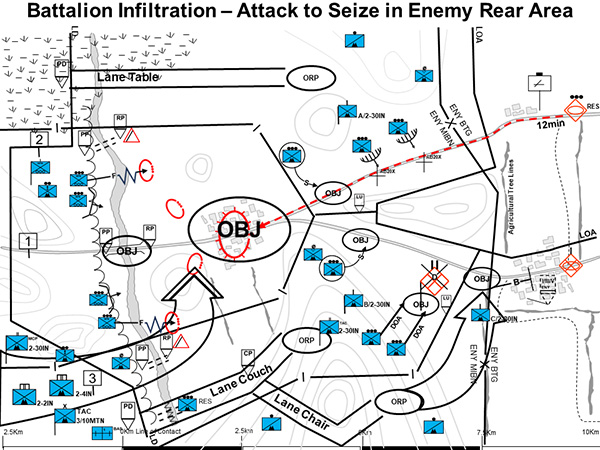
Figure 1 — Battalion Infiltration - Attack to Seize in Enemy Rear Area
In Ukraine, advancements in unmanned aerial systems
(UAS), combined with accurate fires assets, have made larger
scale maneuver untenable for long durations. Envelopments
require large unit formations to be able to mass for attacks.
As seen in attacks like the Russian wet gap crossing of the
Siversky Donets River on 8 May 2022, large concentrations of
forces at points of penetration or narrow axes of advance are
often met with massive artillery attacks.6
Such consequences
require units to move in smaller, less detectable formations.
For light infantry, who are particularly susceptible to artillery,
utilizing infiltrations is not just important for mission success
but necessary for unit survival. Detection means death; some
Ukrainian forces have indicated that once a Russian UAS
sees them, “they have as little as three minutes before indirect fire is called in on their location.”7
The same has proven
true for Russian forces, who were shown in an October 2023
video released by Ukraine to be targeted by cluster munitions. For light infantry, success and survival in the UAS era
depend on a tactical unit’s ability to create dispersion to avoid
detection while retaining enough combat power to create
dilemmas in depth.
The Multi-Tool of Maneuver
Infiltrations are an extremely versatile form of maneuver,
as once behind the FLOT, they can be utilized in the offense,
the defense, and to make enemy positions untenable. Again,
these operations take training, risk acceptance, and understanding from subordinate commanders to work effectively.
If successful though, a formation behind an enemy’s FLOT
can not only cause irreparable damage but also impact the
enemy’s decision-making process in a way that is advantageous for the infiltrating unit’s higher tactical or operational
headquarters.
As described in FM 3-90, “infiltrations are used to set
the conditions for larger operations as a part of the overall
scheme of maneuver.”8 With a friendly force forward of the
FLOT, these units can set the conditions for larger operations while simultaneously causing multiple dilemmas for
the enemy. Units can seize key crossings and bridges for
a larger force to cross from unexpected directions while
simultaneously causing the enemy to deploy forces early by
using ambushes and spoiling attacks to protect the friendly
main effort. Finally, infiltrations can position friendly forces to
make enemy strongpoints displace or make them untenable.
By positioning large assets to the rear of a strongpoint, forces
can disrupt enemy resupply or make the enemy withdraw.
This occurred during Joint Readiness Training Center (JRTC)
23-09, where 2nd Battalion, 30th Infantry Regiment faced a
mechanized enemy strongpoint to the southeast. Previous
attempts to seize the strongpoint had failed, and the enemy
continued to resupply along Alternate Supply Route (ASR)
Chevy (see Figure 2). By infiltrating two companies forward
of the FLOT, and along ASR Chevy, the enemy position was
no longer tenable and they withdrew.
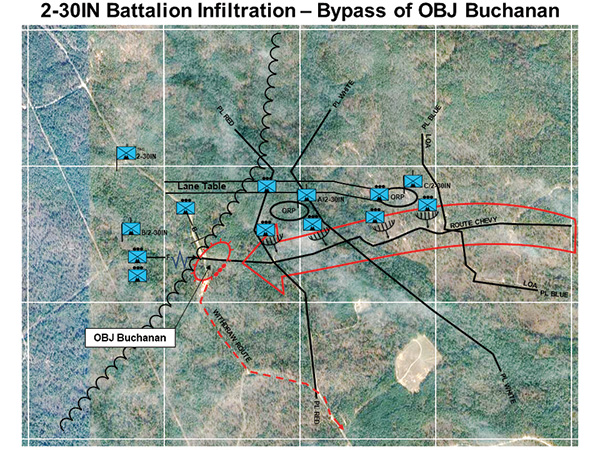
Figure 2 — Battalion Infiltration - Bypass of Objective Buchanan
Expanding on the utilization of infiltration in the offense,
operations not in conjunction with other units or forms of
maneuver can achieve effects and present opportunities to
exploit. In this sense, the use of infiltrations allows friendly
forces to establish an area of operations for small unit actions
forward of the FLOT that do not support an immediate higher
headquarters operation. For example, if a company moves
behind the enemy’s FLOT, it could launch ambushes along
key supply points, specifically against armored formations,
as we have seen in Ukraine. A headquarters forward of
the FLOT can also provide intelligence, conduct raids, or
conduct other harassing attacks. These
variations of attack, reconnaissance,
and security operations enable friendly
forces to disrupt the enemy’s decisionmaking cycle to create opportunities for
other operations. This is not about just
being a nuisance; the successful use of
infiltration should require the enemy to
commit additional resources to counter
friendly actions or give the impression
that a much larger force is present.
The benefits of an infiltration are not
limited to the offense. The light infantry defense is often overlooked as a
security operation in favor of traditional,
larger engagement area-type defenses
common to combined arms battalions.
However, small units are particularly
suited to infiltrate forward of the FLOT in
order to set up multiple ambushes along
key avenues of approach. By moving
small elements into position early and
forward of a traditional engagement
area, friendly forces have the ability
to organize and conduct variations of
attacks, especially on high-value targets
such as armor and engineering assets.
This early employment by small forces
can successfully disrupt attacking forces
long before they arrive at a main engagement area. This has the added benefit of
slowing formations so they are susceptible
to friendly air and artillery assets. Spoiling
attacks at enemy assembly areas are
also a practical use for forces who have
successfully infiltrated the enemy’s rear.
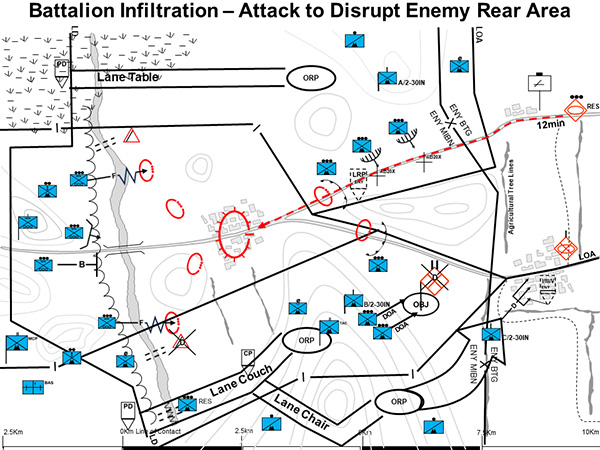
Figure 3 — Battalion Infiltration - Attack to Disrupt Enemy Rear Area
Infiltrations Play to the Strengths of Light Infantry
Light infantry forces are specifically
suited to conduct infiltrations due to their
ability to conduct dismounted movement
through restrictive terrain, move with
minimal signature, and minimize logistical
requirements. Mechanized and motorized
forces are tied to roads, especially in
portions of Europe where the spring thaw prevents movement on all but the best road networks. Enemy sensors,
like the UAS platforms used by Russian forces in Ukraine,
will monitor movement along key routes.9
For light infantry,
the movement through restrictive terrain, such as steep or
marshy terrain, increases the likelihood that a friendly formation can move behind the FLOT undetected. Once a formation is established behind the FLOT, restrictive terrain hides
patrol bases or command posts until the friendly unit decides
to attack. Again, restrictive terrain will assist a dismounted
unit moving back into a rally point without being followed.
Thus, key to not being tracked is a light infantry unit’s ability
to minimize its signature by maximizing terrain where other
units cannot or will not enter.
Along with movement through restrictive terrain, light
infantry units have the ability to minimize their signature
and reduce the likelihood of detection. When conducting
movement, these formations could separate into smaller
units for movement. For example, infiltration lanes should
not become a “dismounted highway” for movement, but care
should be given to the size of the element moving along the
lanes. A battalion should identify different lanes for each
company, and, unless specified, a company can subdivide
into platoon movement formations along distinct movement
lanes. Subdividing into smaller organizations minimizes the
possibility that a unit will be detected, and if it is detected, it
increases the probability that an enemy force would decide
not to dedicate artillery assets on such a small element as
this would make their own guns susceptible to identification
and counter-battery with a relatively low payout. It is unlikely
that a dismounted platoon would exist as an enemy’s value
target, so this pushes the decision calculus in favor of friendly
forces. A light infantry formation has an advantage in restrictive terrain, but it should evaluate all methods of possible
contact, including electronic detection.
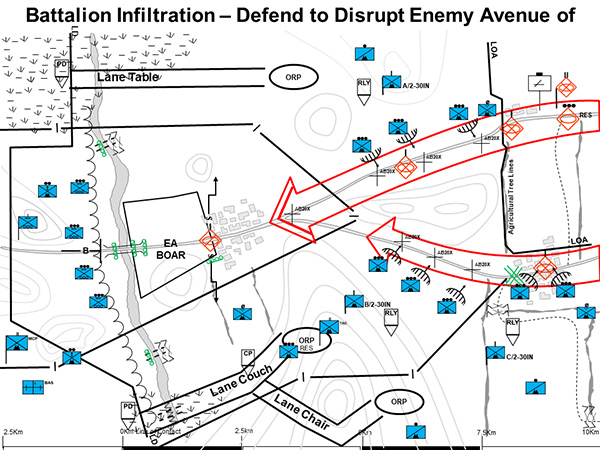
Figure 4 — Battalion Infiltration - Defend to Disrupt Enemy Avenue of Approach
Finally, light infantry formations, if trained properly, can
have a minimal logistical footprint. Although difficult to train,
light formations can operate for extended durations with
limited logistical resupply. When resupply is needed, light
formations can conduct dismounted resupply at the company
level. Additionally, water resupply, which is traditionally one of
the limiting factors in dismounted movement, can be extended
with water filters down to the squad level. Food, batteries,
and ammunition can either be resupplied piecemeal through
dismounted movement, small UAS, or air. Again, this takes
extensive practice but can allow for light infantry to remain
forward for extended periods and achieve sustained effects
on objectives.
Hard to Train
To become proficient at infiltration requires specific training.
Infiltrations can be challenging to successfully execute and
require units to become proficient at long dismounted movements, conduct communications training, complete specific
training with enablers, and execute rehearsals for logistics.
As a basic building block, units that want to succeed at
conducting infiltrations must excel at dismounted movement
under load and over time. The foundation of moving forward
of the FLOT is being able to move far enough forward that you
are in an enemy’s operating area. This requires movements
of 10 kilometers or more through restrictive terrain, a distance
that requires careful consideration into Soldier load and unit
equipment. A unit conducting these types of operations, especially in mountainous or marshy terrain, must be able to move
light. To train for this, a unit must do more than just conduct
long distance movements as part of morning physical training.
Soldiers and leaders must understand Soldier load, movement
rates, and rest periods. Units should practice moving through
the brush, taking halts, and patrolling techniques in both day and low visibility and under a variety of weather conditions
Another element that is difficult for units to train is radio
communications, both control of radio communications
during operations and mastery on different radio types.
During infiltrations, units are susceptible to detection if the
enemy can identify radio traffic on the electromagnetic
spectrum. Utilizing communication windows and formatted
reports to minimize radio traffic takes practice. This discipline
requires both proper use of the radio systems themselves and
practice communicating without using radios. To talk at the
distance required for infiltrations, units must use nonstandard
dismounted radio antennas including dismounted OE254
kits and disassembled COM 201 antennas. Familiarity with
high frequency (HF) radios and tactical satellite radios must
also be obtained. Although these radios are available inside
current formations, Soldiers at the individual level must be
trained and comfortable with tactical satellite and HF equipment, a skill most formations currently lack outside the radiotelephone operator
For the staff and company-level leaders, units conducting
infiltrations must become comfortable planning with enablers
external to the battalion. Infiltrations must be coordinated with
reconnaissance elements, which may help identify infiltration
lanes, pass an infantry unit through their lines, and operate
forward in the vicinity of an infantry battalion during an infiltration. Operations like a reconnaissance handover, passage
of lines, and adjacent unit boundaries require coordinated
planning and shared understanding between the two units.
Additionally, fires planning is a huge part of an infiltration.
Passing targets, no fire areas, and understanding targeting
guidance are key for both the forward unit and the higher
headquarters providing artillery assets. Along with fires, coordinating with air assets, either for insertion or for resupply,
takes time and understanding. Air resupply for units forward
can be a huge advantage but requires a staff that successfully
coordinates with the aviation element and conducts detailed
rehearsals prior to execution.
Lastly, dismounted resupply is not something that should be
overlooked; it takes planning and rehearsal to be successful.
At the company level, understanding who will move back to a
company logistical resupply point, cache, or helicopter landing
zone is not a glorious task, but this is unbelievably essential
to keep a unit forward. The advantage of light infantry is lost
if a unit cannot conduct operations forward of the FLOT, and
the only way to ensure this happens is through a complete
logistics plan. During CTC rotations, units often struggle with
resupplying units during normal operations let alone when
they have a unit far forward and not accessible by road.
Conclusion: The U.S. Army Must Improve at Infiltration Tactics
The lesson taken from the war in Ukraine should not be
that the U.S. Army must accomplish infiltrations to counter
armor advances the way Ukrainians have with the Russians.
It is that infantry forces need this skill to have success against
our near-peer adversaries. Infiltrations are not trained often
enough at home station, and even when they are trained at
a CTC, it is only when a unit commander makes a concerted
effort to conduct one. These operations are hard to train,
conduct, and plan. However, the benefit of utilizing light infantry to their fullest capability is undoubtedly worth the pain of
hard training.
Infiltrations should be added to light infantry missionessential tasks lists (METLs). A METL task drives everything
that a unit should train to be proficient on from the team
through battalion level. This will ensure that difficult tasks
associated with infiltrations are learned and practiced during
a unit’s training phase. Additionally, CTCs will ensure that
units are evaluated on infiltrations against a thinking and
independent opposing force.
In the ongoing Russo-Ukrainian War, Ukrainian units have
conducted multiple successful small unit infiltrations across
the depth of the battlefield and generated both tangible and
intangible effects against a larger enemy force. This has
enabled a significantly smaller force to defend, attack, and
sustain large-scale combat operations (LSCO) for more than
two years while incurring only a fraction of comparable losses
in personnel and equipment. The U.S. Army cannot choose to
ignore a skill set and operational knowledge that has paid dividends in Ukraine and in a way not so dissimilar to the lessons
derived from the Yom Kippur War that was foundational to
AirLand Battle doctrine. Now is the time to begin our next
study of a battle-tested skill set foundational to LSCO — the
infiltration.
Notes
Author
LTC Aaron Childers, an Infantry officer, is currently the G-3 for the 10th Mountain Division. He previously commanded the 2nd Battalion, 30th Infantry Regiment, 3rd Brigade Combat Team, 10th Mountain Division, Fort Johnson, LA. His previous assignments include serving with the 82nd Airborne Division, 1st Cavalry Division, 101st Airborne Division (Air Assault), the Joint Staff, and the Army Staff. He is also a member of the Military Writers Guild.
MAJ Michael Stewart, an infantry officer, is currently the brigade S-3 for 3rd Brigade, 10th Mountain Division. He previously served as the operations officer for 2-30 IN. His other assignments include serving with the 3rd Cavalry Regiment, 25th Infantry Division, 3rd Security Force Assistance Brigade, and Army Futures Command.